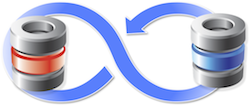 Storing data, and how long an organization stores it for, has emerged as one of our customers’ key concerns. The Field History tracking facility which has been the foundation as the foundational data audit capability continues to see a surge in customer usage which is generating increased demand for further tracking capabilities and as a result increased storage and retention requirements on Platform.
Storing data, and how long an organization stores it for, has emerged as one of our customers’ key concerns. The Field History tracking facility which has been the foundation as the foundational data audit capability continues to see a surge in customer usage which is generating increased demand for further tracking capabilities and as a result increased storage and retention requirements on Platform.
Salesforce.com is responding by developing features that will allow customers to retain their data for longer periods of time.
As the first part of a larger data lifecycle management (DLM) initiative, Salesforce is offering a Field History Retention pilot in Winter ’14. The feature is available through the Salesforce Enterprise Data APIs and Tooling API, and gives you the ability to define the field history data that you would like to retain, and the length of time you would like to retain it.
The pilot lets you specify field history retention date ranges for standard fields in these Salesforce objects:
• Accounts
• Contacts
• Leads
• Opportunities
• Cases
The workflow is simple. Simply start the Field History Retention job by setting a date for the field history you want to retain. You can run multiple jobs simultaneously.
Here’s an example using REST API:
HTTP method:
URL:
BODY:
Once you’ve started the job, you can use the API to check the job’s status, and eventually verify that you’ve retained the correct data. Note that in this example we’ve specified a future date for RetainOlderThanDate, which will result in the retention of all field history for your organization.
That’s what you can do for now. But in future posts, I’ll talk more about our plans for broadening the Field History Retention pilot, and our intentions for offering different policies around long-term data retention. In the future, we’ll be giving you complete control over the state of your historical data: your data retention policy will determine where your data lives, and for how long.
Looking even farther down the road, we’ll consider the data lifecycle management of more objects beyond field history, as well as a broader set of use cases. If you have something else you’d like us to consider, please leave a comment below.
For more information about the Field History Retention Pilot, see the Field History Retention Implementation Guide. Hungry for even more, check out our Dreamforce ’13 presentations here and here.
For more information about joining the pilot, contact your account team or Customer Support.